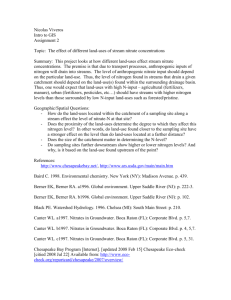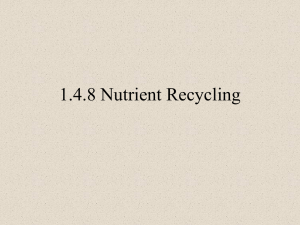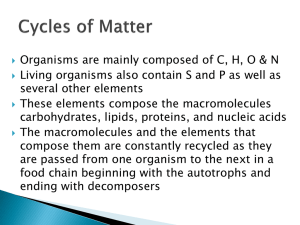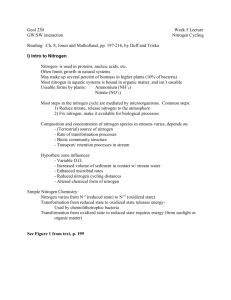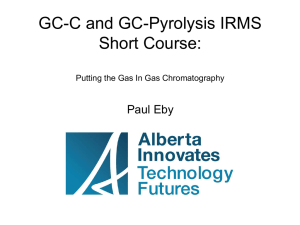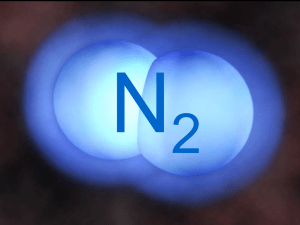Nitrogen Biogeochemistry in the Binghamton Urban Ecosystem
advertisement
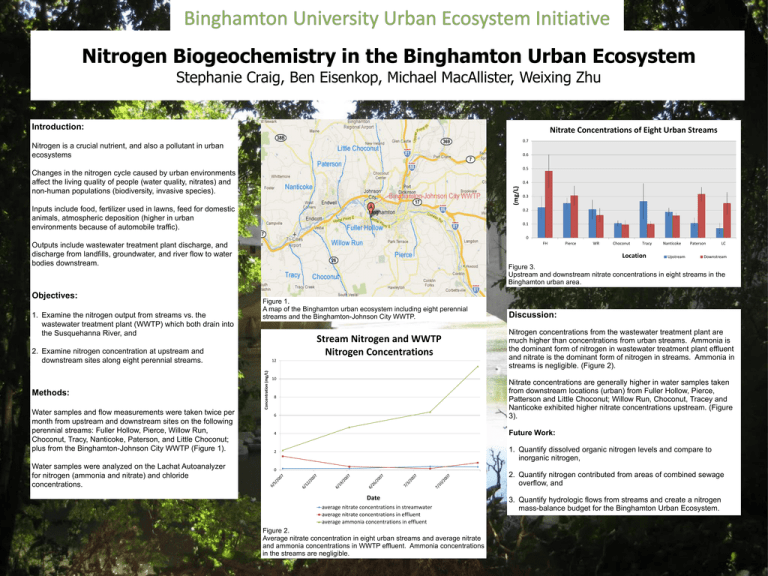
Nitrogen Biogeochemistry in the Binghamton Urban Ecosystem Stephanie Craig, Ben Eisenkop, Michael MacAllister, Weixing Zhu Introduction: Nitrate Concentrations of Eight Urban Streams 0.7 Nitrogen is a crucial nutrient, and also a pollutant in urban ecosystems 0.6 0.5 Changes in the nitrogen cycle caused by urban environments affect the living quality of people (water quality, nitrates) and non-human populations (biodiversity, invasive species). (mg/L) 0.4 Inputs include food, fertilizer used in lawns, feed for domestic animals, atmospheric deposition (higher in urban environments because of automobile traffic). 0.3 0.2 0.1 0 FH Outputs include wastewater treatment plant discharge, and discharge from landfills, groundwater, and river flow to water bodies downstream. Objectives: 1. Examine the nitrogen output from streams vs. the wastewater treatment plant (WWTP) which both drain into the Susquehanna River, and Water samples were analyzed on the Lachat Autoanalyzer for nitrogen (ammonia and nitrate) and chloride concentrations. Choconut Tracy Nanticoke Upstream Paterson LC Downstream Figure 3. Upstream and downstream nitrate concentrations in eight streams in the Binghamton urban area. Figure 1. A map of the Binghamton urban ecosystem including eight perennial streams and the Binghamton-Johnson City WWTP. Stream Nitrogen and WWTP Nitrogen Concentrations 12 Concentration (mg/L) Water samples and flow measurements were taken twice per month from upstream and downstream sites on the following perennial streams: Fuller Hollow, Pierce, Willow Run, Choconut, Tracy, Nanticoke, Paterson, and Little Choconut; plus from the Binghamton-Johnson City WWTP (Figure 1). WR Location 2. Examine nitrogen concentration at upstream and downstream sites along eight perennial streams. Methods: Pierce 10 Discussion: Nitrogen concentrations from the wastewater treatment plant are much higher than concentrations from urban streams. Ammonia is the dominant form of nitrogen in wastewater treatment plant effluent and nitrate is the dominant form of nitrogen in streams. Ammonia in streams is negligible. (Figure 2). Nitrate concentrations are generally higher in water samples taken from downstream locations (urban) from Fuller Hollow, Pierce, Patterson and Little Choconut; Willow Run, Choconut, Tracey and Nanticoke exhibited higher nitrate concentrations upstream. (Figure 3). 8 6 Future Work: 4 1. Quantify dissolved organic nitrogen levels and compare to inorganic nitrogen, 2 0 2. Quantify nitrogen contributed from areas of combined sewage overflow, and Date average nitrate concentrations in streamwater Figure 2 average nitrate concentrations in effluent average ammonia concentrations in effluent Figure 2. Average nitrate concentration in eight urban streams and average nitrate and ammonia concentrations in WWTP effluent. Ammonia concentrations in the streams are negligible. 3. Quantify hydrologic flows from streams and create a nitrogen mass-balance budget for the Binghamton Urban Ecosystem.


